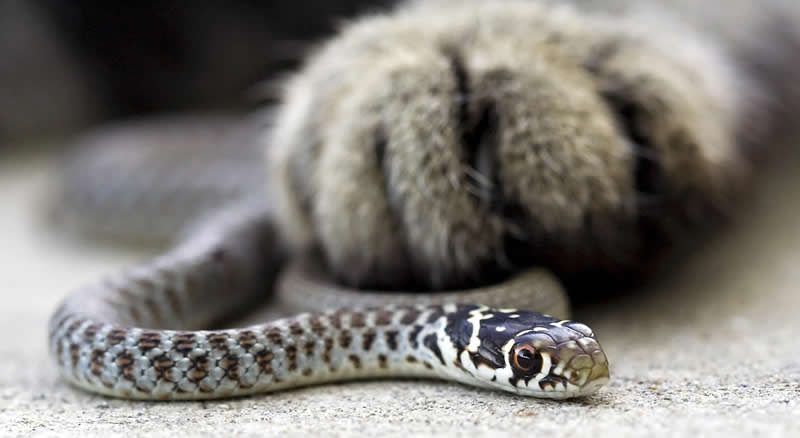Cat Info
What To Do When Your Cat Suffers A Snake Bite
Warm summer months in Australia bring along perilous experiences especially to your beloved pet – the cat. It is during this season that snakes find their way out of the jungle, looking for an opportune moment to strike and cats always find themselves on the receiving end due to their natural propensity towards hunting. Snake bites in cats mostly manifest on the face as well as in the legs.
The reactions that your cat exhibits are determined by several factors and these include the amount of venom as well as the type of the snake. The part of the body where the cat is inflicted also plays a pivotal role in this regard. For example, a bite closer to the heart will definitely exacerbate the rate at which venom circulates to the rest of the body. The type of the snake also determines the fatality of the bite.
There are a myriad ways through which you can fathom that your cat is suffering from a snake bite. Some of the manifestations include vomiting, sudden weakness followed by collapse, dilated pupils, and blood in urine and shaking. You may also notice an element of twitching on your cat’s muscles and a hard time blinking. Paralysis may also be evident, which is a clear indication that venom circulation and its underlying effects have reached an advanced stage.
The first thing to do the moment you notice any of these signs is to embark on first aid before consulting a vet. The most viable first aid exercise for a cat is to use a pressure bandage around the bitten area in order to inhibit faster circulation of venom to other body parts. This is actually a task that you accomplish quite easily as you head to the nearest vet for better care and treatment. The truth of the matter is that your cat stands a very high chance of recovery when you visit a vet during the early stages of the attack. Typically, this should happen between two to twenty-one hours of the bite.
It is good if you get to identify the type of the snake responsible for the bite since this helps the vet quite immensely in developing the most ideal treatment approach. This should however not be much of a concern since there are tests carried out by the vest in order to solve the puzzle. Basically, treatment revolves around the use of contra venous fluids as well as the administration of antivenin in order to counteract the venom circulating in the cat’s body.
Depending on the extent of damage caused by the venom, your cat may require extra supportive care such as oxygen supplementation. This is in case breathing has been affected. Treatment continues until venom loses grip of the cat’s circulation and respiratory system.
Laboratory research in Australia posits that cats do show a great deal of resilience to brown and tiger snake venom when compared to larger animals. It puts their recovery rate at 91 percent. This clearly shows that your favorite pet stands a wonderful chance for survival if you seek treatment at the right time. In order to protect your cat from snake bites in future, it is advisable that you keep your neighborhood clean by cutting long grass and clearing rubbish piles since such as these serve as hiding places for snakes.
You can find lot’s of advice on Love my Pet and Ovens and Kiewa Veterinary Hospital.
Tagged advice, backyard, bite, care, danger, health, paralysis, safety, snake, symptoms, tips













